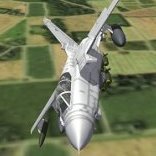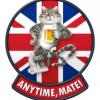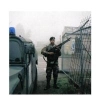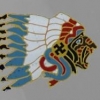Leaderboard
Popular Content
Showing most liked content on 08/27/2021 in Posts
-
4 points
-
4 pointsBAC Lightning F.7A - No.5 & No.11 Squadrons, RAF Strike Command, 1983 Skin Credit: MacGalin
-
3 points
-
3 points
-
2 points
-
2 pointsmeh, i have subscribed to the belief for years that we are not in fact alone we are just the neighborhood the aliens roll the windows up and lock the doors as they pass through
-
2 points
-
2 pointsGREAT NEWS!! I am able to play the mod now. I just low my graph specs to medium and it is perfectly playable!! Thank You Menrva for your kind support. 🙂
-
2 pointsin the field data figure these entries [Texturexxx] Filename = seaxxx.TGA HasWater = 1 HeightMap = seaxxx_hm.BMP HeightMapScale = 2.000000 Color = 0.241387,0.257525,0.233230 ----------------- (this color data) SolidObjectTexture = AlphaObjectTexture = TerObjectFalklandTrees.TGA MipMapLevels = 6 when cloning that data in many tiles I create the problem of limit of loads I never closed the texture number 847, if it had a limit it would have to be 900, 1000,500, a round number, so since I had to rewrite about 130 tile data in the data replace that color number: = xxxx.xxx .xxx that I never gave importance to but it was repeated in the series. that vast so that the missing tiles appear and the graphics engine will not load the texture 1 replacing them
-
2 pointsThanks to a blue screen of my pc and a restoration to a safe point, all the last changes in the data of the Malvinas terrain were erased. so I had to rewrite, and I came up with an idea that maybe it could be what could be generating the tile limit, while rewriting I made the change, and guess what? The area that was not loaded correctly was loaded (despite in the tdf editor if it was loaded correctly) I am very happy. because the project does not die Sorry my bad english
-
1 pointJust for fun as I am well aware that the real NAF23 proposal was a major change to the prototype design....
-
1 point
-
1 pointBill Gates: "We designed the Blue Screen especially for this boy to solve his map problem"
-
1 pointBecause these numbers don't seem real to the vast legions of science-denying people that continue to spout the same nonsensical line as "proof" that we are alone in the universe: "IF there's someone else out there, why haven't we heard from them?' There is absolutely no conception of the distances involved in that statement. They're just numbers to many people, and being mathematically challenged to begin with, the figures don't translate into anything they can understand. And sadly, these same vast legions have no desire to learn or understand any of this. If they did, they would realize their beliefs about their place in the universe was BS from the word "GO", and as one former work acquaintance put it, "If I let myself believe any of that, it would make me feel insignificant".
-
1 pointSize of the known universe: 150,000,000,000 light years - Circumference of Earth: 24,901 miles - Speed of light: 186,282 miles per second If you were traveling at the speed of light (186,282 miles per second), you'd travel the circumference of the earth (24,901 miles) in .0074 of a second. The human eye blinks in .3333 of a second, so at light speed you could travel the earth's circumference forty-five times in the time it takes to blink. If you traveled across the universe at the speed of light it would take you 150,000,000,000 (150 billion) years or 54,750,000,000,000 (fifty-four trillion, 750 billion) days or 1,898,734,177 (one billion, eight hundred ninety-eight million, seven hundred thirty-four thousand, one hundred seventy-seven) average human life spans. We still think we're the only ones in the universe. My brain hurts.
-
1 point
-
1 point
-
1 point
-
1 point
-
1 pointNot quite this day in history, but more like the history we're living through right now. Kabul Airport, August 2021, and the Afghan population storm the tarmac to try to flee from the Taliban who are taking back the country. US troops try to secure the airport to allow flights to arrive, load and leave safely...
-
1 pointGrumman F-14K Tomcat FRS.1 - 899 Naval Air Squadron, Royal Navy, 1994
-
1 point
-
1 pointHow a supersonic pilot flies at 0 knots (a hint...not well). Back last year, during vacation time, my significant other 'gifted' me with an introductory helicopter lesson for my birthday. Said vacation time including the flight would be done in Lake Tahoe, Nevada/California. The school willing to take on this monumental task of taking a fast jet operator and slow him down is (redacted due to embarrassment of actually letting me fly with them). This is the story of that 30 minutes. As with all flying stories, it will conform to the fighter pilot 'rule' that at least 10% of the story is true. Your author here has had real world experience in many types of fixed wing aircraft, from soloing a glider to operating supersonic multi-ton bombers, with just about every type of fixed wing in between. Pictured: God's gift to aviation. Rotary wing? Well, I grew up in the world of LHX, Apache, Jane's Longbow, Black Shark and several other PC based helo simulations. So I was well prepared, right? Pffft...helo's are easy. My steed for today would be the Robinson R44, a 4 seat, piston powered light helicopter. Specifically, THIS helicopter. The R44 has proven to be very popular all over the world due to its price, ease of maintenance and relatively benign flight characteristics. But my helo simming has all been combat aircraft, so I felt it needed some 'improvements'. Seems legit. Now that I was in the proper mindset, i was introduced to my instructor, an older gentleman by the name of TC. He spoke with an Eastern European accent, and as we got to talking, I found out he had flown helos back before 'the wall' fell. He named what he had flown 'stackin' which I didn't understand at the time. Unfortunately, I have no good pictures of him because the withering look he would give the camera caused it to glitch every time. I found out after my flight that TC is a nickname given to him by the other instructor pilots and means 'Taught Christ' (to hover). And that 'stackin' was actually 'Stakan' or 'Стакан'...which roughly translates as "Drinking Glass"...a name given by Mi-24 pilots to early models. Perfect container to hold some fine wine. With the preliminaries out of the way, TC asked what kind of flight I wanted...a general 'forward motion' flight over Lake Tahoe, operating the helicopter like a light aircraft but getting to see the sights, or actual 'hover' instruction, where the majority of the flight would be only about 10 feet off the taxiway. Of course, I selected the 'hover' instruction...what's the point of a helo flight if you don't hover. I immediately received the warning that the 'hover' flight was a lot more work. How little did I know. After that, I was given a FAA mandated brief on the dangers of unloaded flight. In a nutshell, in a two bladed helicopter, during forward flight, if the cyclic is suddenly pushed forward, the aircraft will unload much the same way a fixed wing aircraft would. The difference is that an uncommanded roll can occur, and the initial reaction of using cyclic to counter the roll may A) not work at all and B) cause the rotor to flex past limits and hit the rotor mast or another part of the fuselage. Noted here in the Robinson Safety Notice SN-11 (revised November 2000): Which basically is saying that if you push too far forward too quickly, you may cause spontaneous disassembly of the aircraft. Of course, I was assured that this would take some effort to achieve and so rarely happens. Sure. And they were so glad I still wanted to fly with them that they even wanted my autograph! The paper I signed had wording on it, something about "hold harmless"... Now we were off to the helo! As I recalled from my flight sims, the collective was like a handbrake, with a throttle thumb wheel, the cyclic and rudders were controlled by a stick and pedal arrangement similar to most fighter type aircraft. Annnnd...not so much in the R44. Is that a yoke? I've never heard of a helo controlled by a yoke... And why is there just one stick and it's between the front seats?? What kind of crazy helo is this?!? Who signed me up for this flight anyway??? Did I mention I had recently increased my life insurance coverage? Turns out, the 'v' part of the 'yoke' doesn't actually do anything directly. It's a clever way to have dual flight controls without having dual control sticks. Instead, there is one cyclic control stick, and the 'v' merely places a handle the pilot holds in front of him as it would be in a conventional helicopter or aircraft. In practice, it doesn't feel any different than a normal flight stick (except you can't fly it with your knees). It was time to get flying! Startup reminded me of my initial training in a Cessna...even down to keeping the door open and calling 'Clear!' before engine start. The initial part of the flight was a 'box' pattern at the standard VFR altitudes in an aircraft. TC flew most of this part, with me taking the controls at altitude to start getting familiar with how the aircraft felt. The procedures during this part were similar to how you would fly something like a Cessna, with the exception that 'taxiing' a helocopter is still an airborne exercise. I found for the most part, the helo felt lighter than a Cessna in overall mass, and at speed, seemed to fly like you would expect a light prop to fly. The exception was if I was ham handed with the cyclic (lots of overshoots). The rotor would audibly create a 'slapping' sound, with an associated vibration. A combination of aerodynamics and physics unique to a flexible rotary wing causes this phenomenon. If you're rattling like that, you're not being smooth. Opening a carbonated drink would not have been a good idea on my flight. Don't be this guy. After the initial intro to the aircraft, we came back to the airport and settled on the taxiway...way the hell away from any buildings. Almost like we had to give me plenty of room... My wife and friends stopped taking pictures after a while because I was more or less sitting there, from 0 to about 10 feet, and not moving much at all. In the cockpit, it was a different story. Something that still has not been able to be conveyed completely successfully in a PC based flight simulator is the feeling of inertia and mass. Oh sure, lots of PC sims have tried to a lessor or greater extent to mimic this using physics models. Even multi-million professional simulators have limitations in this regard, and the comment is always how the "sim" doesn't quite fly right. Nothing yet has quite been able to truly master the combination of inputs your somatosensory, semicircular canal, and otolith organs provide to augment the visual picture. My actual flight experience has mostly been in aircraft that weigh at least 9,000 pounds, with the majority being either 10,000 - 12,000 lb aircraft or 200,000 - 350,000 lb aircraft. I've had experience in aircraft outside of those ranges, but they are mostly outliers. The feeling of mass behind my inputs is a tangible factor in my crosscheck. A R44 grosses out at 4,000 lb. We were probably closer to 3,000 lb all total. My typical fuel loads in one tank are higher than the entire weight of this helo. I swear that I would just belch and the damn thing would change its flight characteristics. We started with one axis at a time. Collective only first, then rudder only, then cyclic only, while TC would hold the other controls. Then combinations...collective and rudder, cyclic and collective, cyclic and rudder. And finally, all 3 together. This was all needed to just try to keep the helo on the same spot on the taxiway, holding a heading, and staying somewhere within +3 feet of altitude. Any twitching on one axis immediately required an input on another axis. There were small triumphs...momentarily keeping it in the same general space. "I've got it in a steady hover!" "Holding 50 degrees off heading." "Dammit!" I was basically doing the whole 'patting my head, rubbing my stomach' thing, while on a tightrope over a lake of fire. Balancing a pencil on its point...which is also on fire. TC was infinitely patient..."Relax your grip", "Small inputs", "Keep your crosscheck, don't channelize". Yea, yea, I know that, sheesh!! Wait, that's almost the exact instruction phrasing I used to use on my students back in the day. Dammit, I sounded like a giant pain in the ass. So this helo flight not only was humbling me in the present, it was retroactively giving me grief for the past. "I suck." "You have always sucked." After about 15 minutes of this "exercise" (so called because I lost 10 lbs of water weight), TC decided it was time for some instructor demos. He shows me a rapid acceleration, where he uses of combination of collective and cyclic to move forward quickly. Of course, as anyone knows most helos will nose over dramatically to do this...which we did at 10 feet altitude. All I could see was taxiway, really close going by really fast. I swear I saw ants that were blue shifted whizzing by. Pic corrected for redshift. Then, he did a demo of flying backward...again at 10 feet. Next, a demo of landing and taking off of a hill. Yep, first land one ski and then let the helo 'tilt'. Taking off is the reverse...enough collective to get the helo level first with one ski still on the ground, then lift off straight up. The final demo was going back out to the pattern, where I got to fly the helo some more at altitude, then he showed me an auto-rotation. Here's what it felt like: The timing for the flare has to be fairly tight...too soon and you'll run out of lift before you're close enough to the ground. Too late...well, that's self critquing. It was an eye opening demo...though not as abrupt as I thought it would be. It helps that the R44 is pretty light overall. After that, I practiced hovering a few more times (which I sorely needed) and finally, TC 'taxied' us back to the ramp. As we staggered out of the helo, I asked TC what the requirements are for getting a private helo license. He said fifty hours is the minimum before a checkride. But then he looked me in the eye to say some people probably need more hours than that. The only helicopter they would trust me with...right up until I dropped it. And thus ended the adventure of me flying a helo. It was a great experience, that reinforces the lesson that less speed doesn't always mean less challenge. It also shows that although we have come a long way in PC based simulation, it is still better as a supplement than a substitute for the real thing. I would recommend that anyone go out to try the real thing...most flight schools (fixed wing or helicopter) offer the 'intro' lesson at a substantial discount. Keep 'em flying!
Important Information
By using this site, you agree to our Terms of Use, Privacy Policy, and We have placed cookies on your device to help make this website better. You can adjust your cookie settings, otherwise we'll assume you're okay to continue..






















